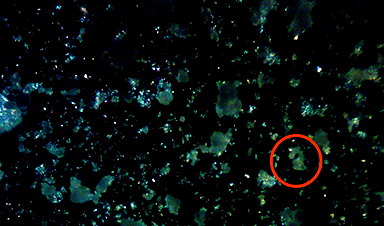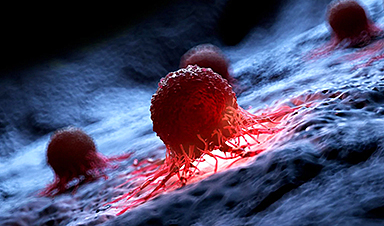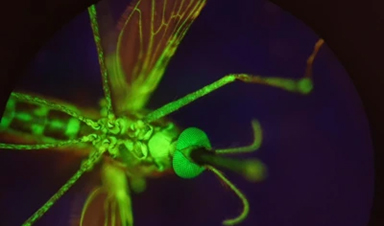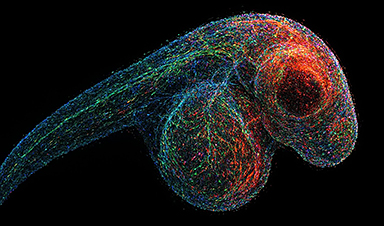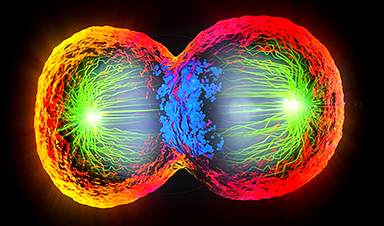Scientists have developed a groundbreaking AI-driven technique that reveals the hidden movements of nanoparticles, essential in materials science, pharmaceuticals, and electronics.
By integrating artificial intelligence with electron microscopy, researchers can now visualize atomic-level changes that were previously obscured by noise. This breakthrough enables a clearer understanding of how these tiny particles behave under various conditions, potentially revolutionizing industrial processes and scientific discoveries.
AI and Electron Microscopy Illuminate Nanoparticle Behavior
Scientists have developed a new method to reveal how nanoparticles move and change over time. These tiny particles play a crucial role in industries like pharmaceuticals, electronics, and energy. The breakthrough, published in Science, combines artificial intelligence with electron microscopy to create detailed visuals of how nanoparticles react to different conditions.
“Nanoparticle-based catalytic systems have a tremendous impact on society,” explains Carlos Fernandez-Granda, director of NYU’s Center for Data Science and a professor of mathematics and data science, one of the paper’s authors. “It is estimated that 90 percent of all manufactured products involve catalytic processes somewhere in their production chain. We have developed an artificial-intelligence method that opens a new window for the exploration of atomic-level structural dynamics in materials.”

Combining AI and Electron Microscopy for Unprecedented Detail
The research, conducted in collaboration with scientists from Arizona State University, Cornell University, and the University of Iowa, merges electron microscopy with AI. This powerful combination allows scientists to observe molecular structures and movements — down to a billionth of a meter — with unprecedented detail and speed.
“Electron microscopy can capture images at a high spatial resolution, but because of the velocity at which the atomic structure of nanoparticles changes during chemical reactions, we need to gather data at a very high speed to understand their functionality,” explains Peter A. Crozier, a professor of materials science and engineering at Arizona State University and one of the paper’s authors. “This results in extremely noisy measurements. We have developed an artificial-intelligence method that learns how to remove this noise—automatically—enabling the visualization of key atomic-level dynamics.”
Revealing Atomic Movements with Deep Learning
Observing the movement of atoms on a nanoparticle is crucial to understand functionality in industrial applications. The problem is that the atoms are barely visible in the data, so scientists cannot be sure how they are behaving—the equivalent of tracking objects in a video taken at night with an old camera. To address this challenge, the paper’s authors trained a deep neural network, AI’s computational engine, that is able to “light up” the electron-microscope images, revealing the underlying atoms and their dynamic behavior.
“The nature of changes in the particle is exceptionally diverse, including fluxional periods, manifesting as rapid changes in atomic structure, particle shape, and orientation; understanding these dynamics requires new statistical tools,” explains David S. Matteson, a professor and associate chair of Cornell University’s Department of Statistics and Data Science, director of the National Institute of Statistical Sciences, and one of the paper’s authors. “This study introduces a new statistic that utilizes topological data analysis to both quantify fluxionality and to track the stability of particles as they transition between ordered and disordered states.”
Reference: “Visualizing nanoparticle surface dynamics and instabilities enabled by deep denoising” by Peter A. Crozier, Matan Leibovich, Piyush Haluai, Mai Tan, Andrew M. Thomas, Joshua Vincent, Sreyas Mohan, Adria Marcos Morales, Shreyas A. Kulkarni, David S. Matteson, Yifan Wang and Carlos Fernandez-Granda, 27 February 2025, Science.
DOI: 10.1126/science.ads2688
The research was supported by grants from the National Science Foundation (OAC-1940263, OAC-2104105, CBET 1604971, DMR 184084, CHE 2109202, OAC-1940097, OAC-2103936, OAC-1940124, DMS-2114143).
News
How Everyday Plastics Quietly Turn Into DNA-Damaging Nanoparticles
The same unique structure that makes plastic so versatile also makes it susceptible to breaking down into harmful micro- and nanoscale particles. The world is saturated with trillions of microscopic and nanoscopic plastic particles, some smaller [...]
AI Outperforms Physicians in Real-World Urgent Care Decisions, Study Finds
The study, conducted at the virtual urgent care clinic Cedars-Sinai Connect in LA, compared recommendations given in about 500 visits of adult patients with relatively common symptoms – respiratory, urinary, eye, vaginal and dental. [...]
Challenging the Big Bang: A Multi-Singularity Origin for the Universe
In a study published in the journal Classical and Quantum Gravity, Dr. Richard Lieu, a physics professor at The University of Alabama in Huntsville (UAH), which is a part of The University of Alabama System, suggests that [...]
New drug restores vision by regenerating retinal nerves
Vision is one of the most crucial human senses, yet over 300 million people worldwide are at risk of vision loss due to various retinal diseases. While recent advancements in retinal disease treatments have [...]
Shingles vaccine cuts dementia risk by 20%, new study shows
A shingles shot may do more than prevent rash — it could help shield the aging brain from dementia, according to a landmark study using real-world data from the UK. A routine vaccine could [...]
AI Predicts Sudden Cardiac Arrest Days Before It Strikes
AI can now predict deadly heart arrhythmias up to two weeks in advance, potentially transforming cardiac care. Artificial intelligence could play a key role in preventing many cases of sudden cardiac death, according to [...]
NanoApps Medical is a Top 20 Feedspot Nanotech Blog
There is an ocean of Nanotechnology news published every day. Feedspot saves us a lot of time and we recommend it. We have been using it since 2018. Feedspot is a freemium online RSS [...]
This Startup Says It Can Clean Your Blood of Microplastics
This is a non-exhaustive list of places microplastics have been found: Mount Everest, the Mariana Trench, Antarctic snow, clouds, plankton, turtles, whales, cattle, birds, tap water, beer, salt, human placentas, semen, breast milk, feces, testicles, [...]
New Blood Test Detects Alzheimer’s and Tracks Its Progression With 92% Accuracy
The new test could help identify which patients are most likely to benefit from new Alzheimer’s drugs. A newly developed blood test for Alzheimer’s disease not only helps confirm the presence of the condition but also [...]
The CDC buried a measles forecast that stressed the need for vaccinations
This story was originally published on ProPublica, a nonprofit newsroom that investigates abuses of power. Sign up to receive our biggest stories as soon as they’re published. ProPublica — Leaders at the Centers for Disease Control and Prevention [...]
Light-Driven Plasmonic Microrobots for Nanoparticle Manipulation
A recent study published in Nature Communications presents a new microrobotic platform designed to improve the precision and versatility of nanoparticle manipulation using light. Led by Jin Qin and colleagues, the research addresses limitations in traditional [...]
Cancer’s “Master Switch” Blocked for Good in Landmark Study
Researchers discovered peptides that permanently block a key cancer protein once thought untreatable, using a new screening method to test their effectiveness inside cells. For the first time, scientists have identified promising drug candidates [...]
AI self-cloning claims: A new frontier or a looming threat?
Chinese scientists claim that some AI models can replicate themselves and protect against shutdown. Has artificial intelligence crossed the so-called red line? Chinese researchers have published two reports on arXiv claiming that some artificial [...]
New Drug Turns Human Blood Into Mosquito-Killing Weapon
Nitisinone, a drug for rare diseases, kills mosquitoes when present in human blood and may become a new tool to fight malaria, offering longer-lasting, environmentally safer effects than ivermectin. Controlling mosquito populations is a [...]
DNA Microscopy Creates 3D Maps of Life From the Inside Out
What if you could take a picture of every gene inside a living organism—not with light, but with DNA itself? Scientists at the University of Chicago have pioneered a revolutionary imaging technique called volumetric DNA microscopy. It builds [...]
Scientists Just Captured the Stunning Process That Shapes Chromosomes
Scientists at EMBL have captured how human chromosomes fold into their signature rod shape during cell division, using a groundbreaking method called LoopTrace. By observing overlapping DNA loops forming in high resolution, they revealed that large [...]

